Want it delivered daily to your inbox?
-
There are no reasons to expect a financial accident in the next month, but it is noteworthy how similar the pattern for the S&P500 and VIX is today to the pattern seen before the Lehman bankruptcy in September 2008, see chart below.
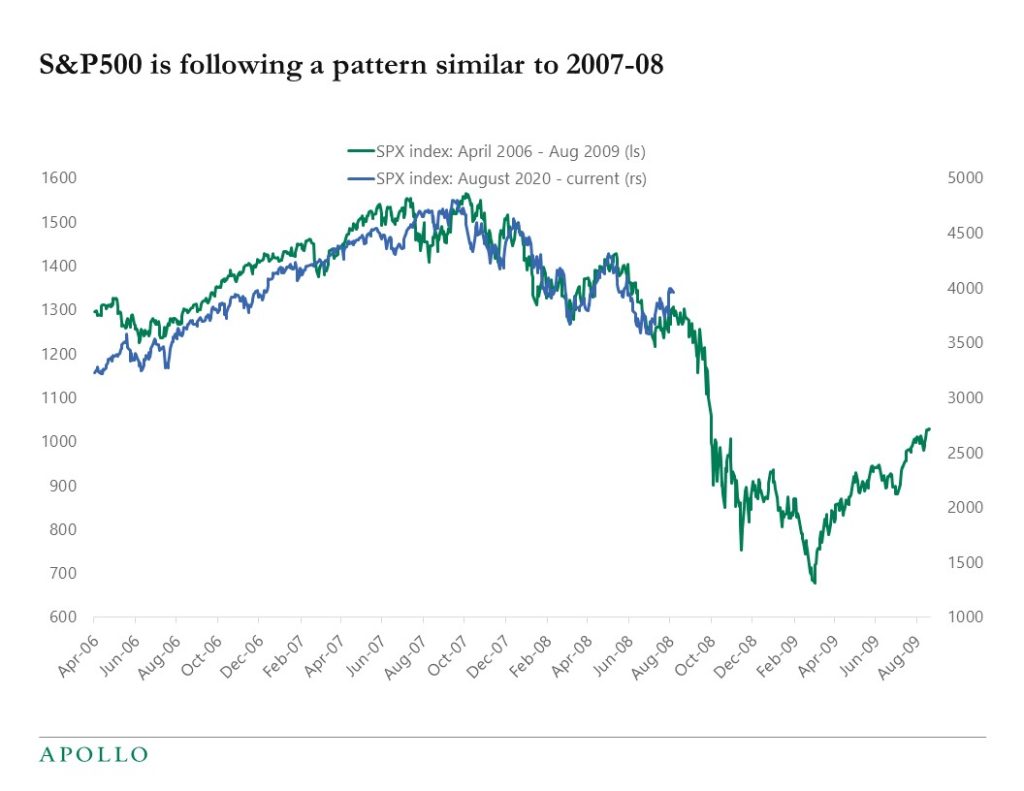
Source: Bloomberg, Apollo Chief Economist 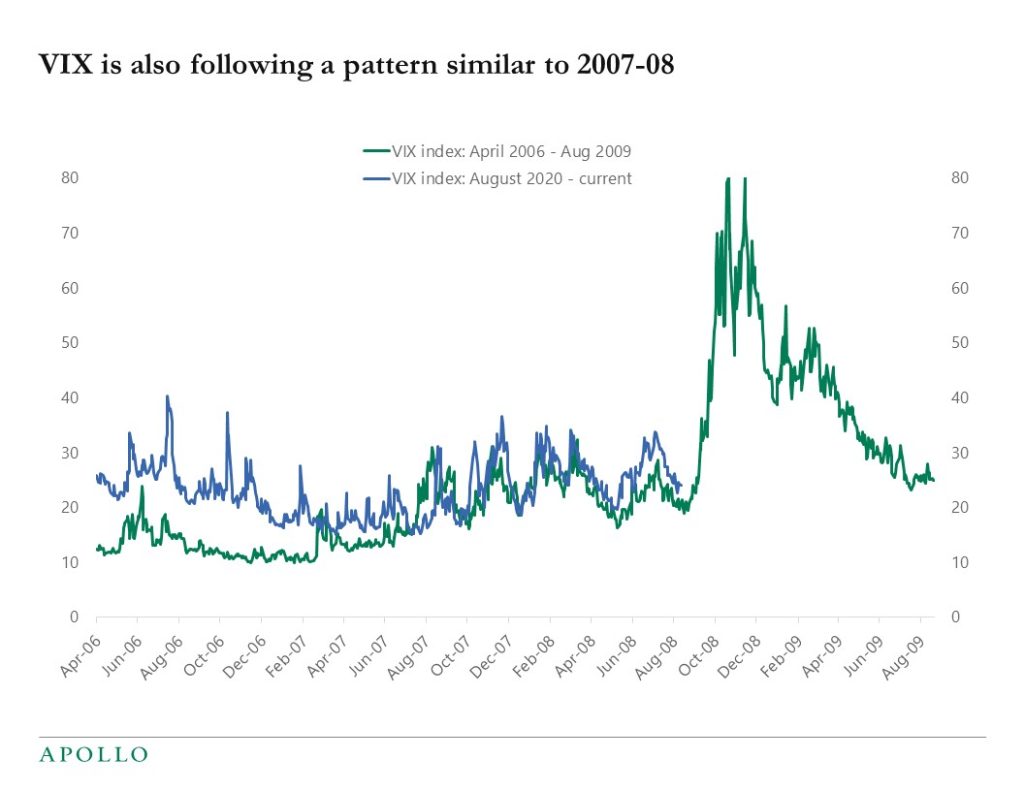
Source: Bloomberg, Apollo Chief Economist See important disclaimers at the bottom of the page.
-
Inflation peaked in June at 9.1%, and the stock market typically bottoms six months after the peak in inflation, see charts below.
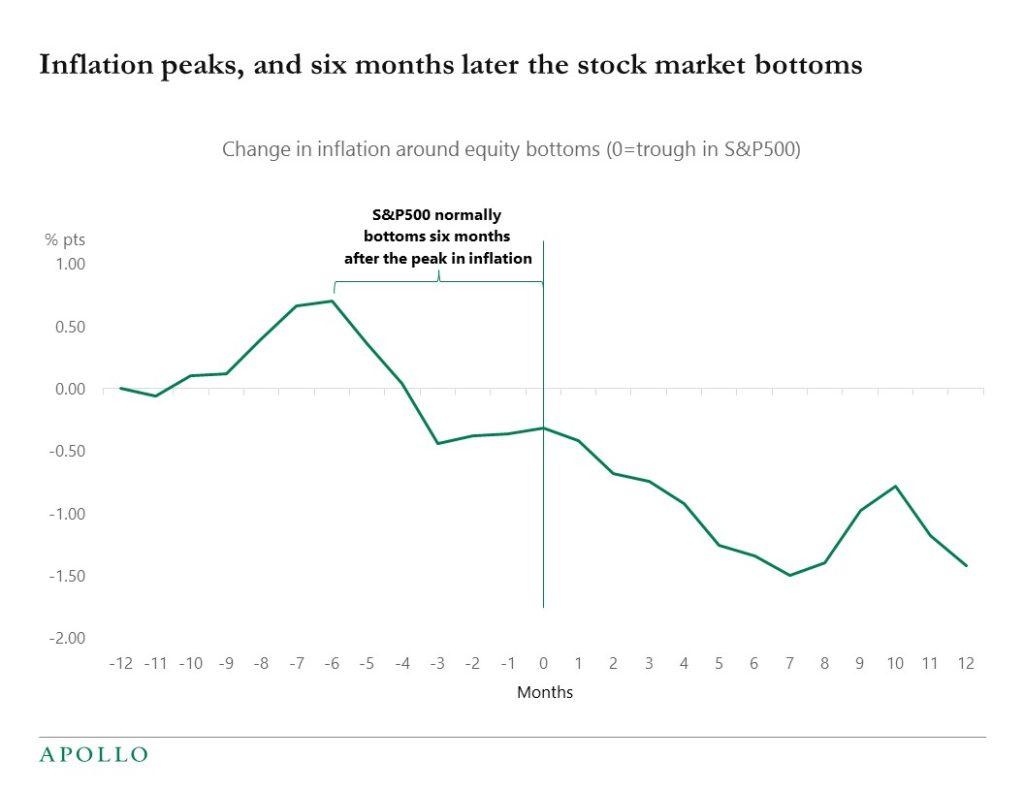
Source: Bloomberg, Apollo Chief Economist 
Source: BEA, Haver Analytics, Apollo Chief Economist See important disclaimers at the bottom of the page.
-
US imports from Europe and UK have been rising, and US imports from China have been declining. And foreign direct investment between the US and Europe is increasing. These trends reflect the ongoing segmentation of global trade with more onshoring and friendshoring, in particular among OECD countries. The market implication of deglobalization is more structural upward pressure on inflation, complicating the Fed’s job of getting inflation back to the 2% target.
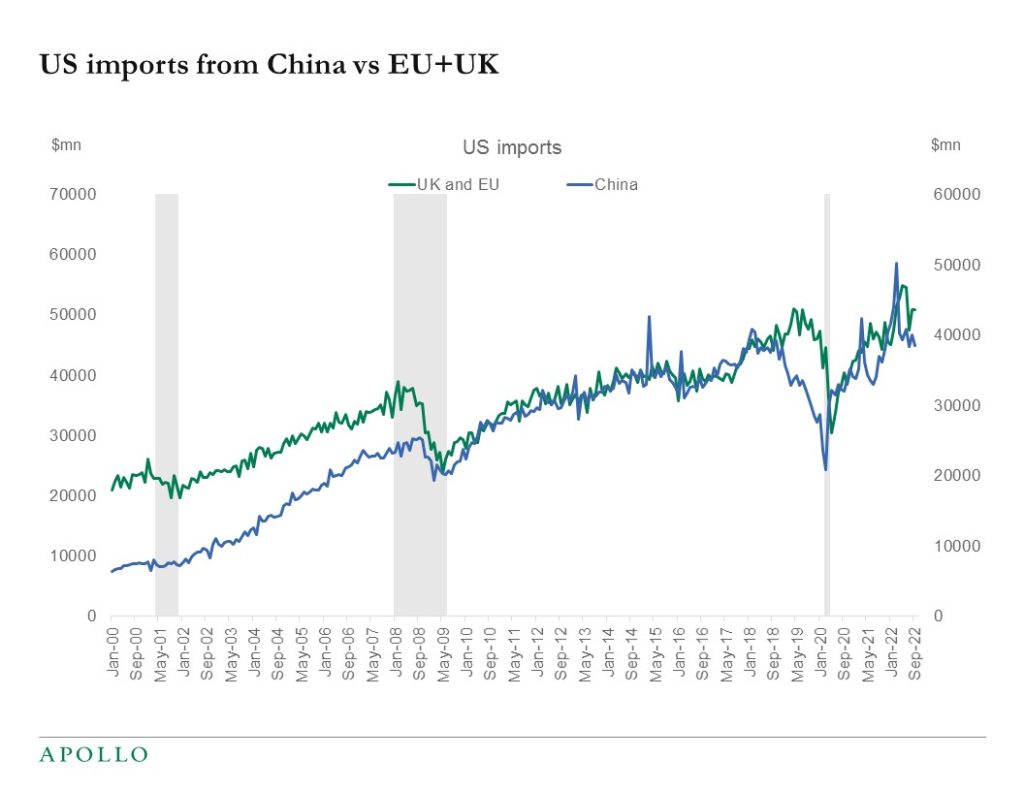
Source: Census, Haver Analytics, Apollo Chief Economist 
Source: BEA, Haver Analytics, Apollo Chief Economist See important disclaimers at the bottom of the page.
-
Fed hikes are starting to cool down the economy via three transmission channels:
1) The interest rate-sensitive components of GDP are slowing down (housing, autos, and capex spending), see chart below.
2) The tech sector is in turmoil because of higher risk-free rates, and layoff announcements are rising.
3) HY primary markets are essentially closed, and this is having a negative impact on issuing firms in both the goods and service sectors.
The bottom line is that monetary policy is working as intended. The Fed started raising rates in March 2022, and these three transmission channels confirm the conventional wisdom that it takes 12 to 18 months before Fed hikes have their biggest effects on the economy.
From an inflation perspective, higher rates are cooling housing inflation and car price inflation, which will push down headline inflation over the coming quarters. As a result, the Fed will soon have achieved their goal and the FOMC will be done with raising rates.
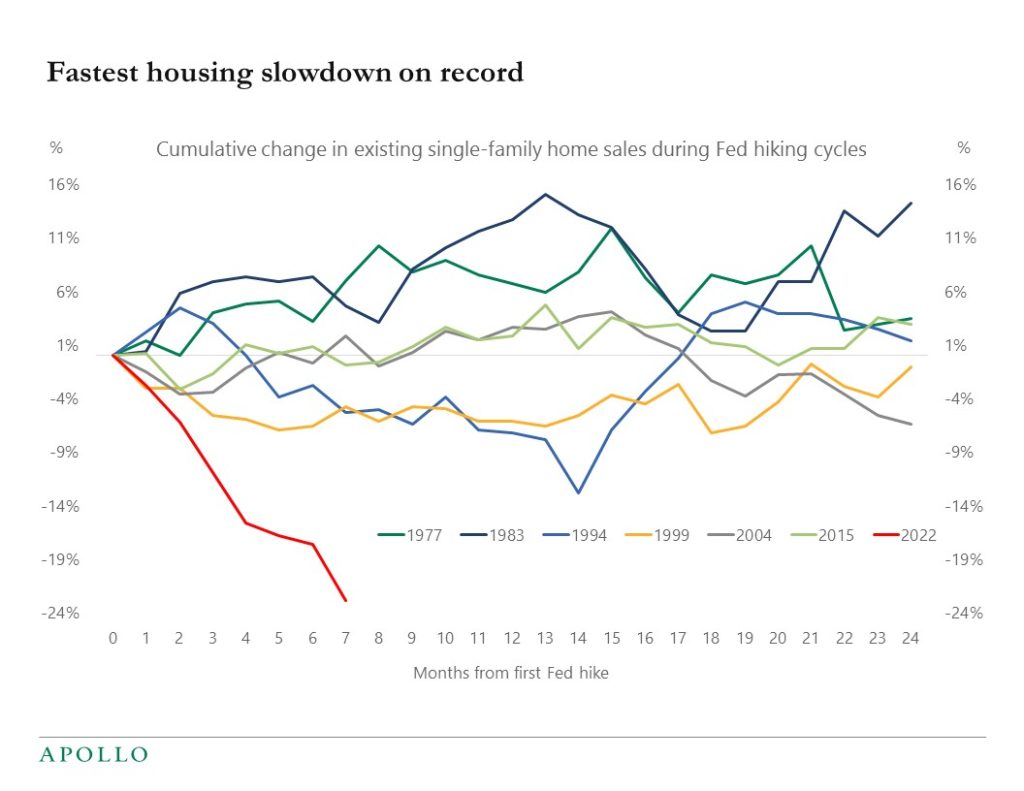
Source: NAR, Haver Analytics, Apollo Chief Economist See important disclaimers at the bottom of the page.
-
If there is a recession in 2023, it would be the most anticipated recession ever, see chart below. My latest outlook presentation is available here.
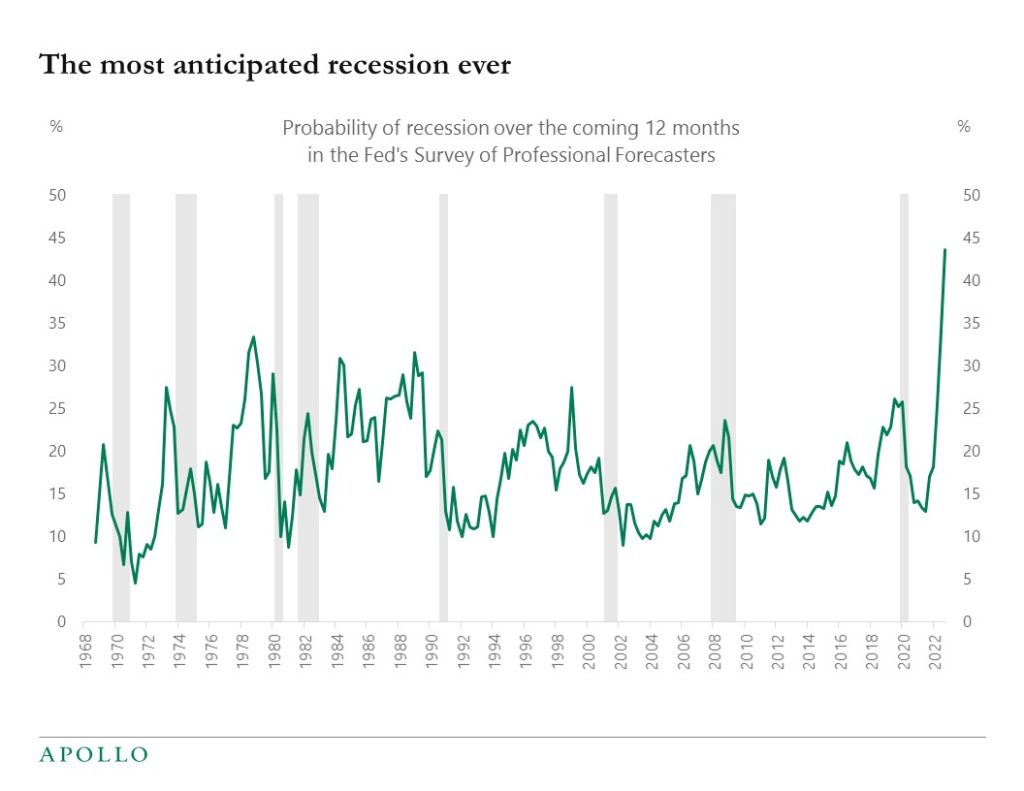
Source: Federal Reserve Bank of Philadelphia, Haver Analytics, Apollo Chief Economist See important disclaimers at the bottom of the page.
-
The chart below compares the price of different medical procedures across countries.
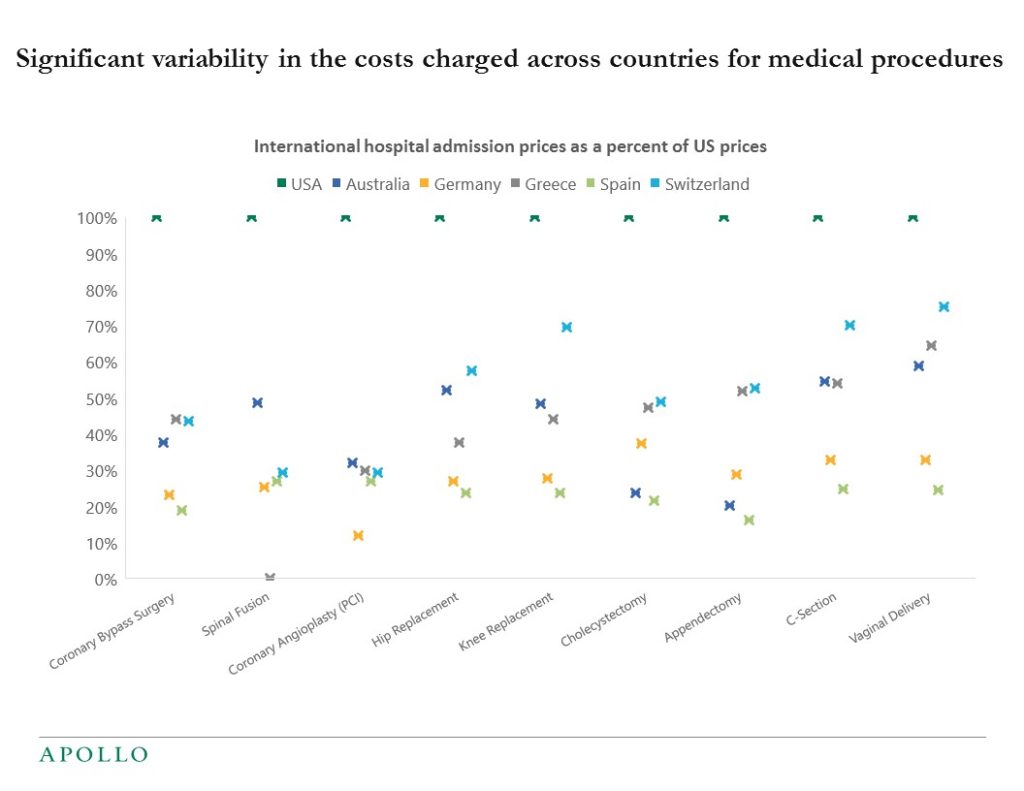
Note: Data for 2019. Source: The International Federation of Health Plans (iFHP), Apollo Chief Economist See important disclaimers at the bottom of the page.
-
Weekly data shows that the number of people going to Broadway shows is rising and is now at 2019 levels, see chart below. Our collection of daily and weekly indicators for the US economy is available here.
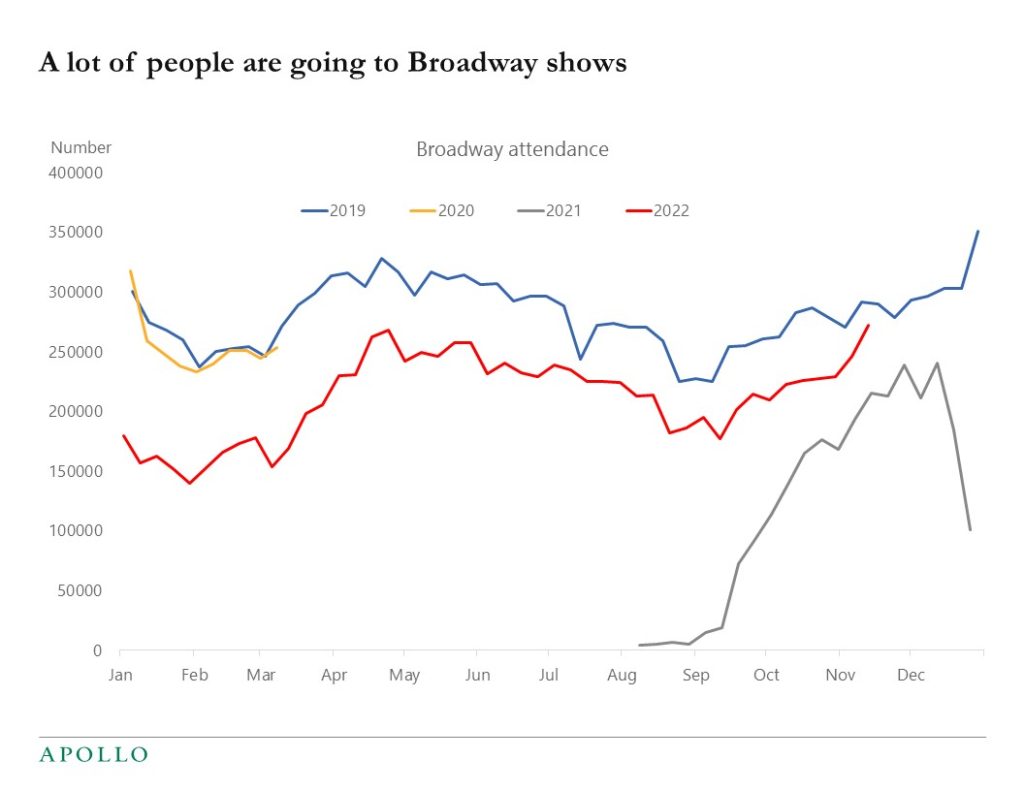
Source: Internet Broadway Database, Apollo Chief Economist See important disclaimers at the bottom of the page.
-
The S&P500 rises on average 15% in the 12 months after the Fed pauses, see chart below.

Source: Bloomberg, Apollo Chief Economist See important disclaimers at the bottom of the page.
-
Not only is housing inflation rolling over in both the Zillow and Redfin data, but core CPI ex housing has been coming down and was actually negative in October, see chart below.
A sharp slowdown in core CPI ex shelter combined with the ongoing downturn in the housing market increases the probability that inflation is coming down faster than the market is currently expecting. Which raises the likelihood that the Fed may soon be done with rate hikes.
And note again that this decline in inflation is happening while at the same time the labor market is still strong and consumers have a lot of savings, see also my note yesterday. Maybe the Fed has raised rates enough and we don’t need a lot more demand destruction to get inflation down.
The bottom line is that the likelihood of a soft landing is rising.

Source: BLS, Haver Analytics, Apollo Chief Economist See important disclaimers at the bottom of the page.
-
With a 9-month lag between rents starting to come down until OER moves lower, we are getting closer to the peak in housing inflation, see chart below. The fact that inflation is coming down before we see any deterioration in the labor market is very important for markets and for the outlook for a soft landing. The Fed hitting the dual mandate with first a decline in inflation and then an increase in unemployment increases the likelihood of a soft landing. If we had first an increase in unemployment with inflation still going up, it would increase the probability of a hard landing because then we would need more demand destruction from the Fed. The bottom line is that the sequencing of how the Fed reaches its dual mandate is key for markets.
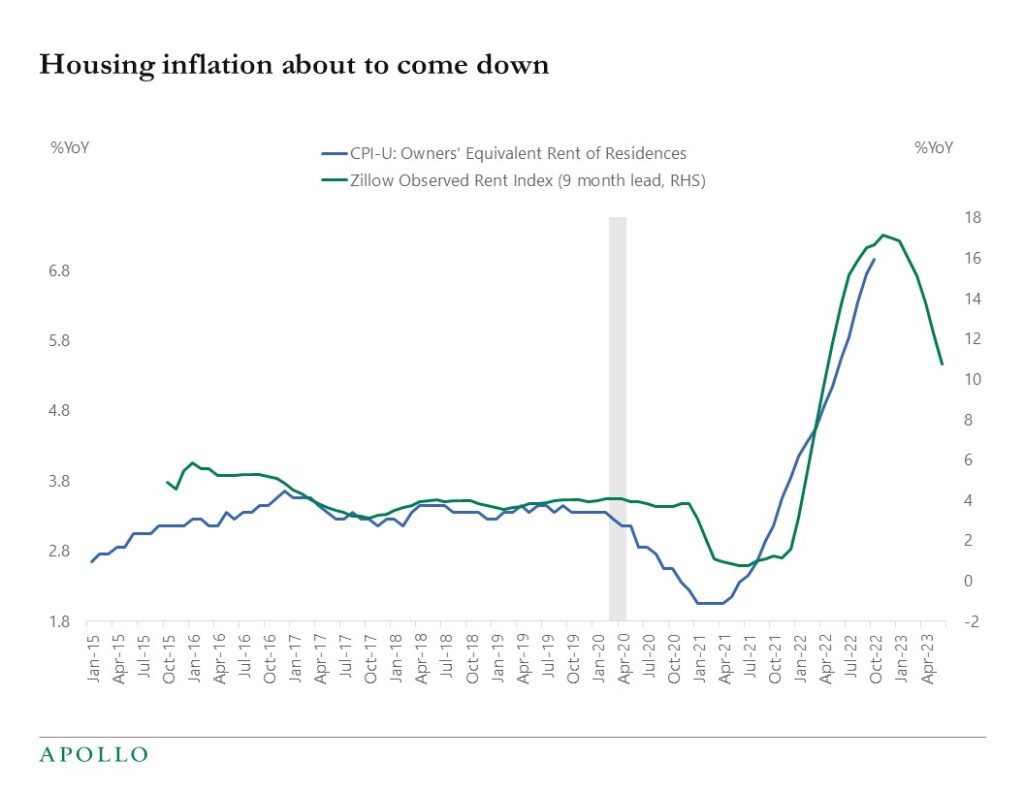
Source: Zillow, BLS, Haver Analytics, Apollo Chief Economist See important disclaimers at the bottom of the page.
This presentation may not be distributed, transmitted or otherwise communicated to others in whole or in part without the express consent of Apollo Global Management, Inc. (together with its subsidiaries, “Apollo”).
Apollo makes no representation or warranty, expressed or implied, with respect to the accuracy, reasonableness, or completeness of any of the statements made during this presentation, including, but not limited to, statements obtained from third parties. Opinions, estimates and projections constitute the current judgment of the speaker as of the date indicated. They do not necessarily reflect the views and opinions of Apollo and are subject to change at any time without notice. Apollo does not have any responsibility to update this presentation to account for such changes. There can be no assurance that any trends discussed during this presentation will continue.
Statements made throughout this presentation are not intended to provide, and should not be relied upon for, accounting, legal or tax advice and do not constitute an investment recommendation or investment advice. Investors should make an independent investigation of the information discussed during this presentation, including consulting their tax, legal, accounting or other advisors about such information. Apollo does not act for you and is not responsible for providing you with the protections afforded to its clients. This presentation does not constitute an offer to sell, or the solicitation of an offer to buy, any security, product or service, including interest in any investment product or fund or account managed or advised by Apollo.
Certain statements made throughout this presentation may be “forward-looking” in nature. Due to various risks and uncertainties, actual events or results may differ materially from those reflected or contemplated in such forward-looking information. As such, undue reliance should not be placed on such statements. Forward-looking statements may be identified by the use of terminology including, but not limited to, “may”, “will”, “should”, “expect”, “anticipate”, “target”, “project”, “estimate”, “intend”, “continue” or “believe” or the negatives thereof or other variations thereon or comparable terminology.






